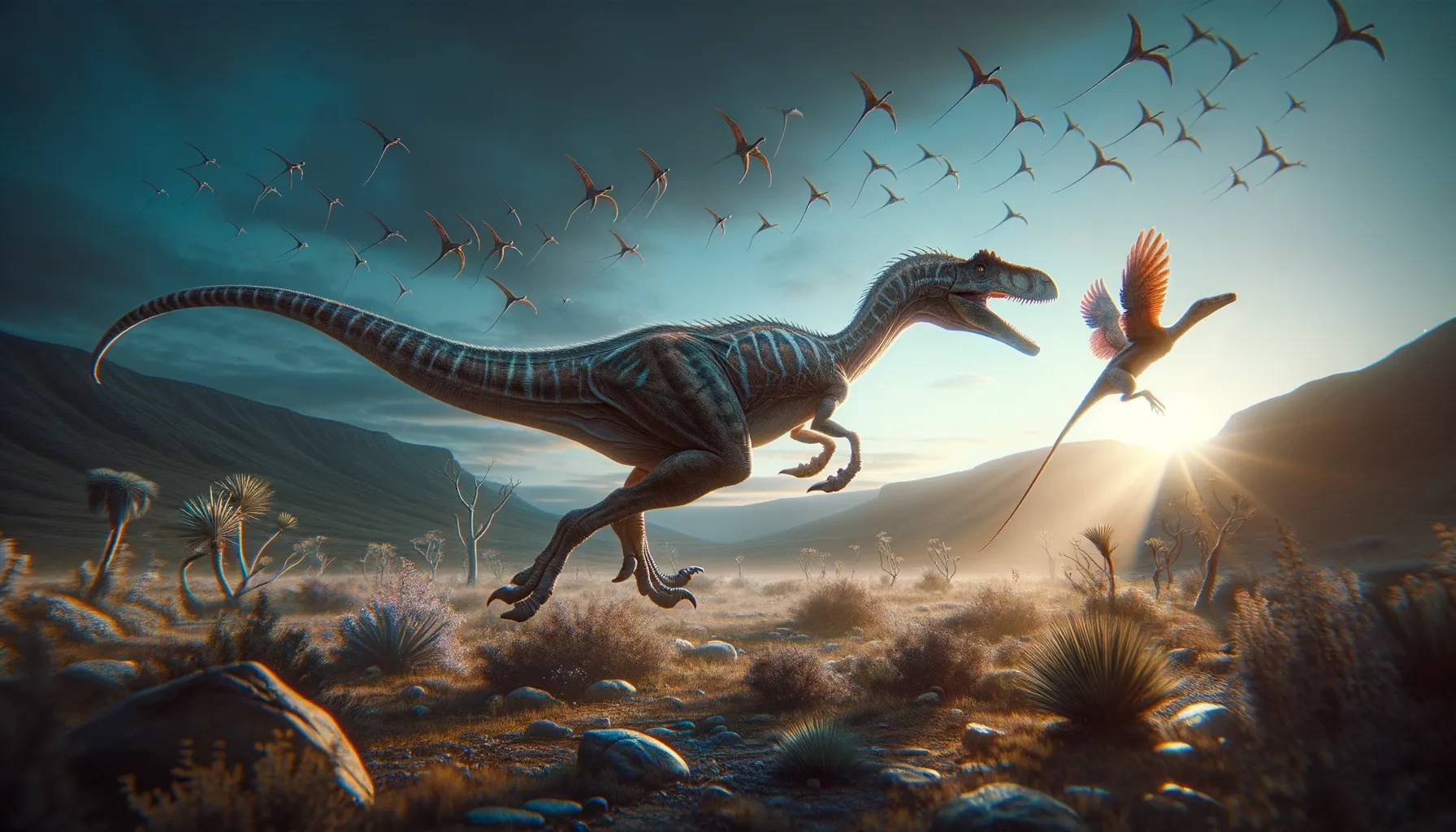
Coelosaurus
Swift predator from the ancient forests.
Period
Cretaceous
Length
Approximately 2 to 3 meters long.
Height
Estimated to be about 1 to 1.5 meters tall.
Weight
Likely weighed around 30 to 50 kilograms.
Coelosaurus was a small theropod dinosaur that lived during the Late Cretaceous period. This dinosaur is known more from its historical significance as part of early American paleontology than from complete fossils. Its name means 'hollow lizard,' reflecting its delicate and lightweight bones. Although fossil evidence is limited, it is believed to have been a swift predator, chasing down small prey in what are now the eastern United States.
Diet
Coelosaurus was likely a carnivore, feeding on small animals. Its diet may have included insects, small mammals, and other reptiles, making use of its speed and agility.
Hunting
Coelosaurus probably hunted by stalking its prey through dense vegetation, using its speed to catch up to fleeing animals. Its lightweight build would have made it an efficient predator in the forested environments it inhabited.
Environmental challenges
Coelosaurus faced challenges such as fluctuations in climate and competition for food resources with other predatory dinosaurs. Changes in sea levels might have affected its habitat, forcing it to adapt to varying landscapes. Additionally, the presence of larger predators would have posed a constant threat, necessitating keen senses and agility.
Speed
It was likely a fast runner for its size.
Lifespan
Estimated to be around 20 to 30 years.
First discovery
First described in the mid-19th century.
Fun Facts
- Coelosaurus was a small, bipedal dinosaur that lived during the Late Cretaceous period, around 70 million years ago.
- Despite its name meaning 'hollow lizard', Coelosaurus was more closely related to birds than modern reptiles.
- Coelosaurus is only known from fragmentary remains, making it one of the mysterious dinosaurs with much yet to discover.
- It was likely a fast runner, using its long legs to chase after prey or escape predators.
- Coelosaurus might have been a carnivore, feeding on small animals or insects.
- Its fossils have been found in North America, offering a glimpse into the continent's ancient ecosystems.
- Coelosaurus contributed to our understanding of the diversity and evolution of small theropod dinosaurs.
Growth and Development
Young Coelosaurus probably grew rapidly to reach their adult size, developing the skills needed for hunting and survival early in life. Juveniles likely had to fend for themselves, learning to evade predators and find food independently. Their growth rates may have been influenced by environmental factors and food availability.
Habitat
Coelosaurus inhabited the forested regions of the Late Cretaceous, with a preference for areas offering dense coverage for hunting. These environments were likely warm and lush, providing ample food resources. Its habitat was rich with biodiversity, including both plant and animal life crucial for its survival.
Interaction with other species
Coelosaurus interacted with various other species, both as predator and competitor. It might have competed with other small theropods for food, while also avoiding larger predators. Its presence played a role in the ecosystem, controlling populations of small prey species.
Natural lifespan
Its natural lifespan is estimated to be around 20 to 30 years.
Reproduction
Coelosaurus likely laid eggs, with nests possibly built in hidden locations to protect future offspring from predators. Parental care might have been limited, with hatchlings relying on instinct to survive. Success in reproduction would have been crucial for the species, ensuring genetic continuation in a challenging environment.
Social behaviour
Little is known about the social behavior of Coelosaurus, but it may have been a solitary hunter like many theropods. There might have been periods of social interaction during the breeding season or while rearing young. Communication probably involved vocalizations and visual displays typical of theropod behavior.
Fossil locations
Fossil evidence for Coelosaurus has been found primarily in the eastern United States. These findings consist mainly of isolated bones and fragments, making detailed study challenging. Despite the limited nature of these fossils, they provide important insights into theropod diversity and distribution during the Late Cretaceous.
